Backpacker killings, Ansett hijacking, toddler rape: Crimes that shocked the Red Centre
From gruesome deaths, suicide missions and a missing body, here’s a look at the crimes that rocked the Red Centre and fascinated the world for all the wrong reasons.

Police & Courts
Don't miss out on the headlines from Police & Courts. Followed categories will be added to My News.
With its gorgeous gorges, untouched nature, and sparse population, Australia and the world have long been fascinated with the Red Centre.
But sometimes the fascination is for the wrong reasons.
Despite the middle of the Northern Territory being one of the most sparsely populated places in the nation, there has been no shortage of crimes and mysteries from the area that have rocked the residents – and the world – with what happened. Here’s some of the most infamous.
Inquest uncovers location of missing All Black but not who killed Tennant Creek man

The inquest into the death of 20-year-old Kumanjayi Limerick in Tennant Creek brought a surprising revelation for the town: it was home to Keith Murdoch, the only All Blacks' rugby player expelled from the squad.
Mr Murdoch was a critical witness at the 2001 inquest into the death. Mr Limerick was found at the bottom of Nobles Nob, an open cut mine 15km southeast of Tennant Creek on October 26, 2000, after he was missing for three weeks.
The height of the inquest saw international media – most notably from New Zealand – descend on Tennant Creek.

The coroner’s report into Limerick’s death placed the deceased at Mr Murdoch’s home in Tennant Creek, with witnesses around the home telling police they heard an argument between the two prior to Mr Limerick’s disappearance.
Taking to the stand at the inquest, Mr Murdoch said he didn’t remember any incident relating to Mr Limerick before he disappeared.

Mr Murdoch was expelled from the All Blacks in 1972 after punching a security guard in Cardiff, Wales. Afterwards, he disappeared into the Australian Outback.
He was sighted in Western Australia, New Zealand, and was working on drill rigs and at stations before he was brought as a witness to the inquest.
The coroner cleared Mr Murdoch of any involvement in Mr Limerick’s death. He died aged 75 in 2018.
Police reopened the investigation at the request of the coroner, however, no charges were ever laid over Mr Limerick’s death.
Victorian man stabs French backpacker at rest stop to ‘save the world’
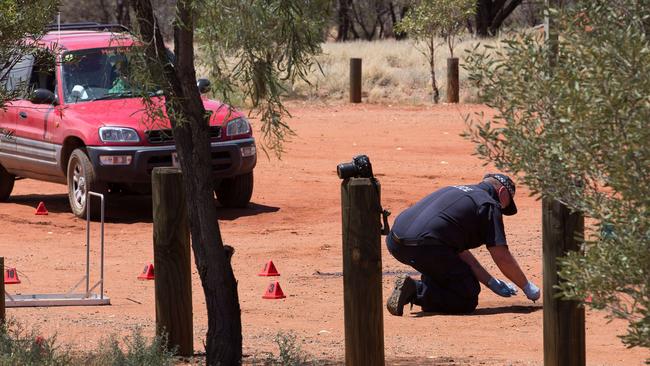
a killer who stabbed a 33-year-old French backpacker to death with scissors in 2016 told psychiatrists he would “save the world” by committing the act.
In 2018, Victorian Pande Veleski, 43, was sentenced to 20 years of custodial supervision under the care of the chief executive of the Health Department for killing Phillipe Jegouzo at Connor Well, a rest stop 92km north of Alice Springs.
On November 30, 2016, Mr Jegouzo was making a coffee with his partner Aurelie Chorier when Veleski pulled into the rest stop.
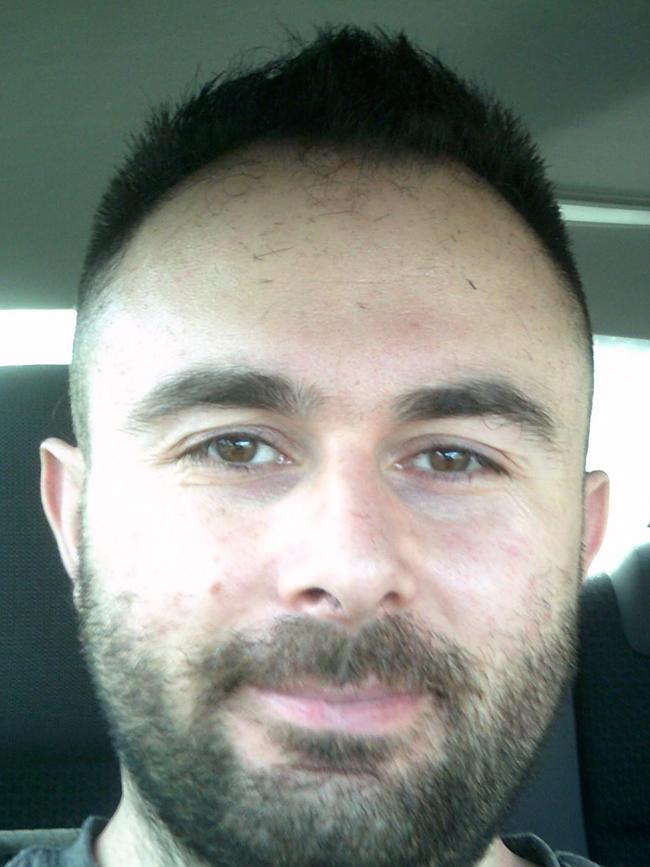
Veleski walked up to the couple and stabbed Mr Jegouzo 20 times with a pair of scissors. Mr Jegouzo died shortly afterwards, despite those around performing CPR.
Veleski pleaded not guilty by way of mental impairment to Mr Jeguzo’s murder.
He pleaded the same way to his two counts of assaulting police officers, and one count of attempting to escape custody.
Two psychiatrists, Professor David Greenberg and Dr Lester Walton, concluded Veleski was unable to determine his conduct was wrong.
Veleski had told the two psychiatrists his reasoning for the murder was he “would save the world” by doing so.
The court heard Veleski was off his medication at the time of the murder and had no prior history of violent offending.
Reading out a victim impact statement at Veleski’s sentencing, Mr Jegouzo’s twin sister, Isabelle Jegouzo, said “this person, whom I don’t know, hasn’t just killed someone, he has devastated an entire family”.
The airplane hijacker who wanted to ‘commit suicide in a spectacular way’

On Wednesday morning, November 15 1972, Ansett flight 232 left Adelaide bound for Alice Springs.
It would end in a shootout, a suicide, and a Queen’s Commendation for Bravery for a NT police constable.
The flight on the Fokker Friendship Turboprop was routine, until half an hour before arrival, when Czech immigrant Miloslav Hrabinec approached flight attendant Gai Rennie and said “this is a hijack”.
Armed with a sawn-off .22 Armalite rifle and sheath knife, Hrabinec demanded a parachute, a jump suit, and to be let off the plane 1000 miles in the desert.
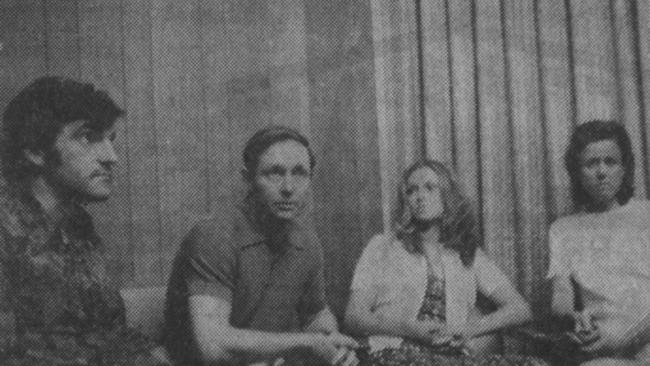
However, the hijacker’s plans went astray, as the captain said the plane was in a critical stage of the landing.
With the plane brought down at Alice Springs airport, police were notified, and the crew held hostage.
Kaye Goreham, one of the flight attendants taken hostage, said Hrabinec told her he didn’t want money.
“He told us over the four hours we were held captive that he wanted to commit suicide in a spectacular way,” she said.
“He intended to parachute out over the desert, and survive for as long as he could and then commit suicide.”
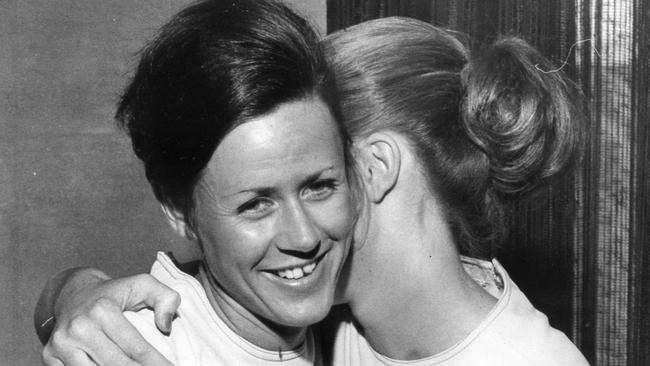
A plan was hatched by police to fly Hrabinec out in a Cessna, with police constable Paul Sandeman in plain clothes posing as a navigator.
But Hrabinec was suspicious of Mr Sandeman. The officer lunged at Hrabinec, who shot him in the hand and stomach, and then his right shoulder and left arm as he escaped.
A shootout with other police ensued, and Hrabinec hid behind a bank, where he shot himself.
The coroner ruled Hrabinec’s injury to be self-inflicted in 1973.
At Alice Springs Airport in 1973, Mr Sandeman was awarded Queen’s Commendation for Bravery for his actions in the hijacking.
Killer leaves ceremonial sword at wife’s murder scene

A mother who found her daughter in a pool of blood had to sit through two trials, which ended with the judge locking away her daughter’s killer.
In 2017, Darren Ashley was sentenced to life in prison with a non-parole period of 22-years for the May 15 murder of his wife Kirsty in Alice Springs in 2012.
He was first found guilty of the murder in 2014, but was granted a retrial after he appealed the verdict.
However, at the retrial Justice Dean Mildren found Ashley, then 51, remained unremorseful for his actions on the “fateful day”.
Ashley attacked his wife in her brother Iain Steadman’s home, where she had fled after ending the 16-year relationship.

Heather Steadman found her daughter in a pool of blood at the Lovegrove Dr home only hours after the attack.
She was found with 27 knife wounds and two deep cuts along her throat.
After the murder, Ashley attempted to leave a “false trail” for police, which his defence lawyer at the time Tony Elliot said was not a result of forward planning.
In sentencing submissions, Crown Prosecutor David Morters called Ashley’s actions calculated and premeditated – describing him as worse than Top End wife-killer Danny Deacon.

“In this matter the stalking behaviour … (and) the violence in the act of killing make this a more serious murder than Deacon,” Mr Morters said.
Deacon is serving life in prison with a 21-year non parole period after he was found guilty of murdering his wife and dumping his body in Berry Springs, just outside of Darwin.
In Ashley’s 2016 retrial, a jury reached a unanimous verdict of guilty after deliberating for two hours and forty minutes – leaving Ms Steadman in tears outside the courthouse.
He will be 69 years old when he’s eligible for parole in 2034.
Sailor killed north of Tennant Creek ‘most vicious’ police had to investigate
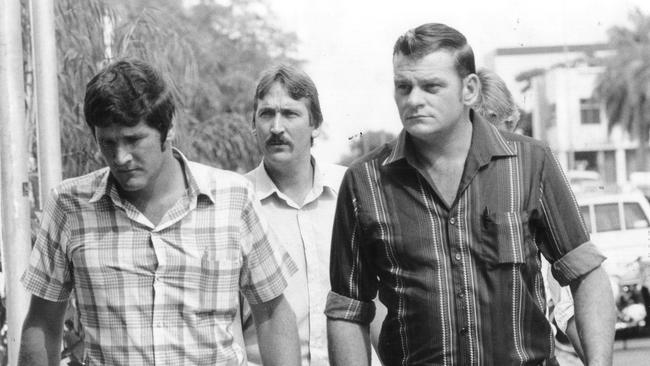
The killing of a 19-year-old sailor – who had just finished his deployment – was one of many for a notorious serial killer, who now identifies as a woman.
In 1981, Regina Kaye Arthurell (formerly known as Reginald Arthurell) robbed and killed sailor Ross Browning on the Barkly Highway.
Before Browning, when Arthurell was 28, she killed her stepfather Thomas Thornton in Queensland with a carving knife before going on the lam.
The two had met at Three Ways, where Browning agreed to provide Arthurell and a friend a lift. Arthurell and the friend then proceeded to bash Mr Browning.

They unhitched his trailer, stole $600 from him, and his car. The duo then drove back to Threeways, before returning to the scene.
Arthurell confessed to the crime to detectives and said they found Browning alive in the shrub so they bashed him to death.
Browning’s body was found mutilated in the shrub 35km east of Tennant Creek.
At the time NT Police described the murder as “the most vicious” they had investigated.
However, with a murder trial aborted, Arthurell pleaded guilty to manslaughter and was sent to Darwin Correctional Centre for 12 years.
While in prison, she became a pen-pal with Venet Raylee Mulhall. She was released into her care in April 1991 after six and half years of the sentence.
Arthurell then went to NSW and murdered Ms Mulhall in February 1997.
She was convicted of her murder and sentenced to 24-years behind bars, with a minimum non parole period of 18 years.
She was released from prison in 2021.
After her release she announced she was now a woman.
Boozy scuffle in Uluru bar ends with massacre
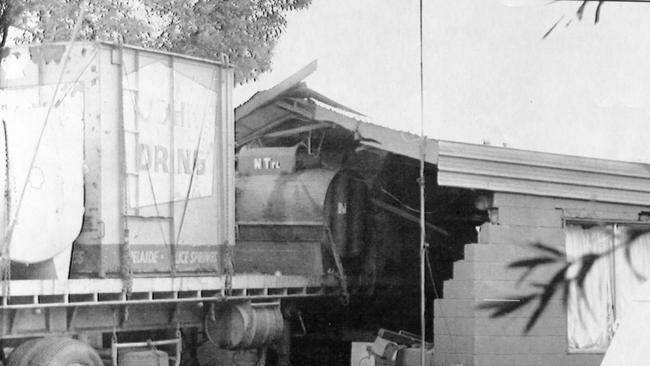
The man behind the NT’s worst mass-murder “smiled down at one of his victims” after he had driven his truck into a motel in the Red Centre, court documents say.
On August 18, 1983, Douglas Crabbe was ejected from Uluru’s Inland Motel at 12.30am after he was refused service and bar staff wrestled him to the floor, putting him in a headlock.
But Crabbe decided to come to back to the bar. He walked 500m to where his truck was parked, unhitched two of the trailers, and rammed his 25-tonne Mack truck into the establishment.
Four people were killed instantly, while 16 were injured, and another died later.
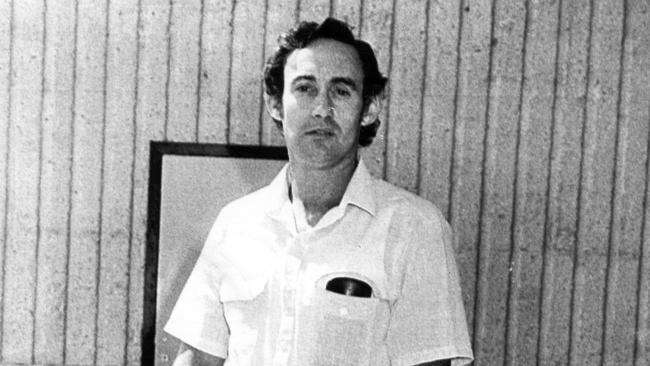
He killed Adrian Durnin, 21, Helen Fuller, 22, David Seng, 24, Leslie McKay-Ramsay, 35, and Patricia Slinn, 45.
At his trial, court documents said Crabbe left the engines running and “got out of the truck, smiled down at one of his victims, stepped over some bodies and ran”.
He aimed straight at the bar, and sped up before he hit it, officer in charge Mark McAdie said.
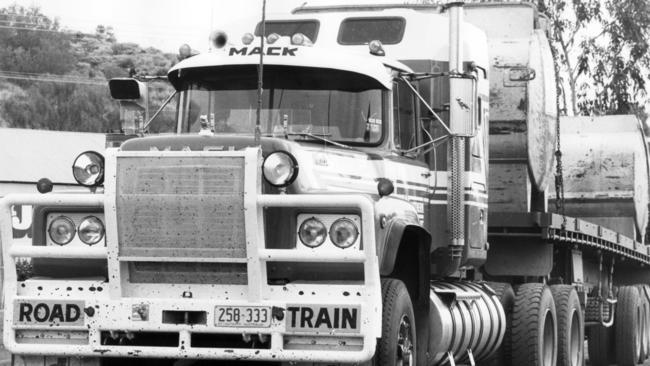
“From the tyre marks on the gravel and on the concrete floor, I knew the truck hadn’t braked before it hit the pub. It had actually accelerated,” Mr McAdie said
In 1984, a jury found Crabbe guilty of five counts of murder. At a retrial in 1985 another jury again found him guilty of five counts of murder.
He was sentenced to five consecutive terms of life in prison, with a 30-year non parole period.
In 2016 his parole was denied.
The ‘ute five’ divide Alice Springs
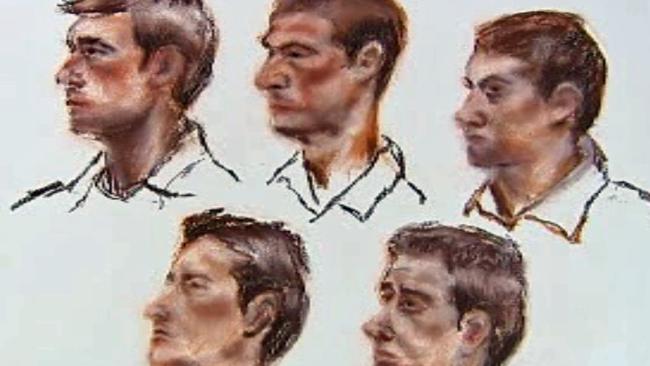
The case of five white men beating an Aboriginal man captured Alice Springs, saw the men sent to prison, and left a mother without a son.
Dubbed the “ute five”, the case of Scott Doody, Timothy Hird, Anton Kloeden, Joshua Spears and Glen Swain and their involvement with the death of Kwementyaye Ryder, 33 on July 24, 2009 gripped Alice Springs.
What started out as a night of binge drinking ended with Kloeden – the only one sober – behind the wheel of a HiLux, with the others inside, driving through the empty Todd River, narrowly missing campers in the river and shooting an imitation pistol to scare people nearby.
Mr Ryder threw a bottle at the vehicle, causing Kloeden to turn around and drive back towards him. Swain, Spears and Hird exited the car and chased Ryder.
He fell to the ground, where the three men kicked him. The court heard Ryder had a pre-existing aneurysm which could have burst at any time, complicating the determinations of the exact cause of death.
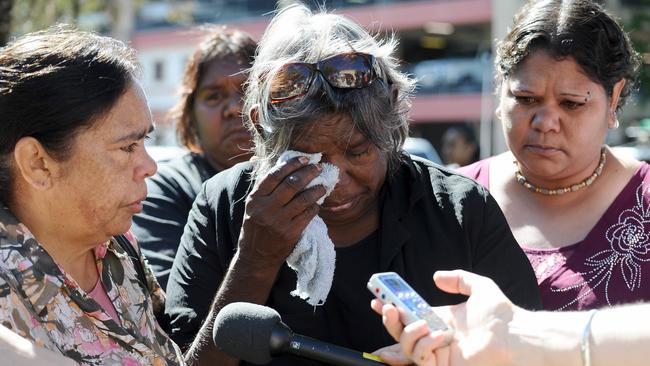
The five each pleaded guilty to manslaughter over Mr Ryder’s death. Each in their 20s at the time, all were given varying sentences.
On April 23, 2010, Doody was sentenced to four years jail, suspended for 12 months, by Justice Brian Martin.
Justice Martin also sentenced Swain to five years and six months in jail, with a non parole period of three years and six months at the same hearing.
Spears, Hird, and Kloeden each got six years in jail with a non-parole period of four years by Justice Martin.
In his Judgement, Justice Martin said the case caused deep divisions in the Alice Springs community.
The ‘most famous outback murder’
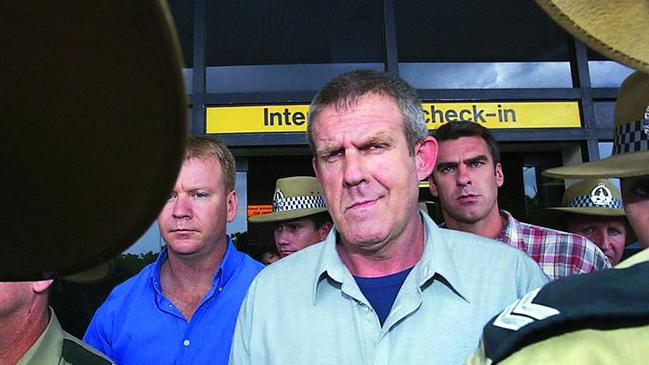
It’s been called the “most famous outback murder”, but what happened to a British backpacker on the Territory’s main arterial highway in 2001 has never been fully uncovered.
That’s despite documentaries about the crime and the Territory government creating a new law in attempt to get more information.
Bradley John Murdoch was found guilty in 2005 of murdering Peter Falconio and assaulting Joanne Lees but the body of Falconio is yet to be found.
Falconio disappeared on July 14, 2001 near Barrow Creek, on the Stuart Hwy. He is presumed dead.

Falconio was driving on the Stuart Hwy with Ms Lees, the duo headed for the Devils Marbles when the driver of a green LandCruiser behind beckoned for them to pull over.
On the side of the road, the driver of the LandCruiser told Falconio there were sparks coming out the exhaust of their orange Kombi.
Taking him to the rear, the man then shot Falconio, before then turning his attention to Ms Lees. He restrained her, however, she was able to escape.
Ms Lees DNA was found on Murdoch.

Murdoch appealed against his sentence in the NT Court of Appeal and sought special leave in the High Court of Australia. His Territory court appeal was dismissed, and the high court refused to grant his application for special leave.
He is currently serving his time at Darwin’s Berrimah Prison.
The NT government introduced “no body, no parole” laws in 2016, which many commentators at the time believed were aimed at Murdoch. They didn’t make him talk.
Peter Falconio’s body still hasn’t been found.
Sacked pilot’s suicide mission ends in tragedy
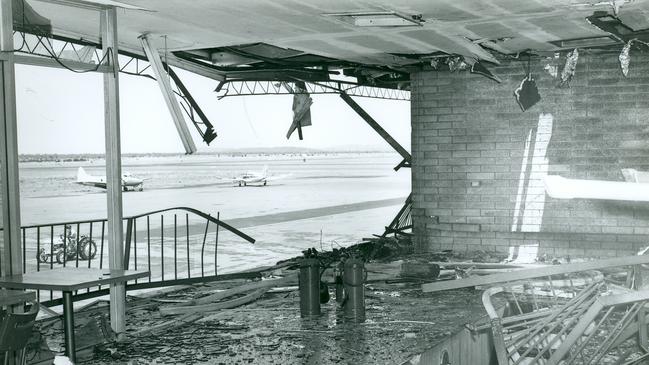
A sacked pilot’s final flight sent shockwaves of grief through Red Centre after he deliberately crashed his plane into the town’s airport, killing his former manager and the son of the founder of the Red Centre’s airline.
On January 5, 1977, Colin Richard Forman flew a stolen Beechcraft 58 Baron into Alice Springs Airport, killing himself and three other people on impact.
Among his victims were his former manager Roger Connellan, son of Connellan Airline founder Edward Connellan.
Five days after the crash, a secretary who was badly burned died of her injuries.
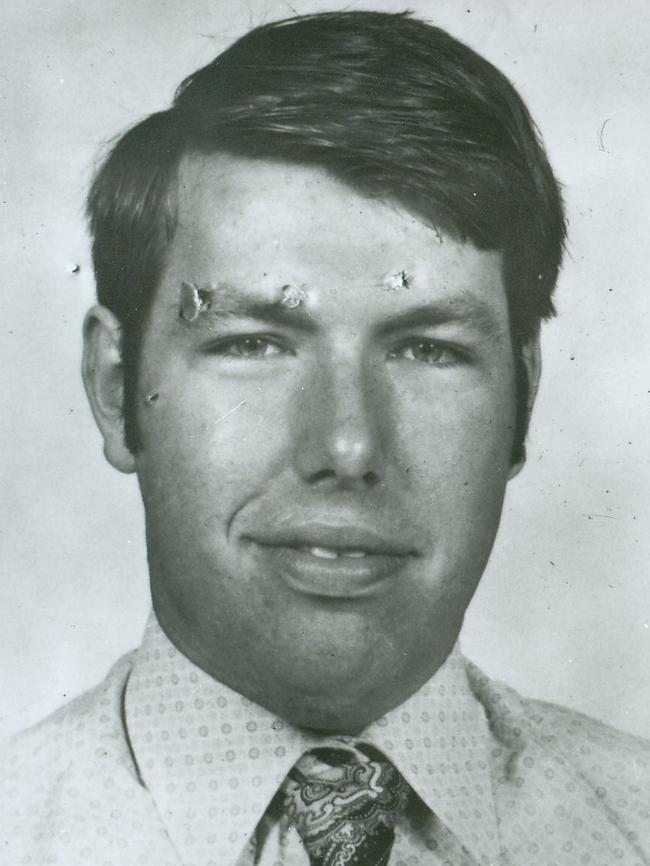
Forman, a UK immigrant, stole the aircraft from Wyndham, WA. A qualified pilot, in 1974 he attempted to forge a ticket back to the UK, but was caught.
Although a qualified commercial pilot who was employed by Connellan, his conviction became known to his employers at Connair.
They dismissed him because of it. He travelled to Wyndham where we worked for Ord Air.
He was later dismissed from Ord Air for the same reason, reportedly after Connellan phoned the company and let them know about his record.
Forman then made his way to Mt Isa, where he lived until he decided to travel back to Wyndham and steal the plane.
After the incident, investigators searched Forman’s Mt Isa apartment, where they discovered an altar, as well as a diary detailing his plans for the attack.
Flying into Alice Springs airport, Forman radioed the control room and said: “It is better to die with honour than to live without it — Echo November Alpha”.
A memorial to the victims is in the Araluen Cultural Precinct, Alice Springs.
Father’s sadomasochism labelled ‘unhelpful’ by judge sentencing son for rape and murder
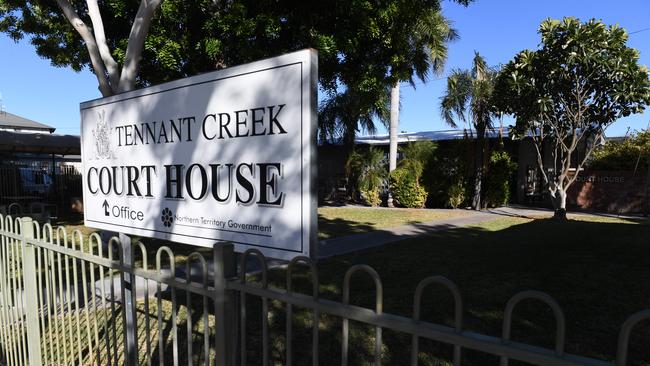
A court has heard how a father’s fascination with sadomasochism imbued itself on his son in the worst ways, as his son serves a life sentence for a brutal murder of a 16-year-old girl in Tennant Creek.
In August, 2004, Christopher Alexander Lukawski, then 19, was sentenced to life imprisonment with a non-parole period of 25 years by Justice Sally Thomas.
Lukawski pleaded guilty to murder and two counts of rape to the girl on May 8, 2002. He was arrested shortly after, with his sentence backdated to time served.
Justice Thomas described the attack as “horrific and violent” and said Lukawski’s father’s obsession with sadomasochism had made him “an unhelpful and probably damaging role model”.
The attack happened behind Rocky’s Pizza in Tennant Creek, in a caravan where Lukawski was living at the time. He had moved to Tennant Creek from Queensland months beforehand.
Lukawski struck the girl with either a bottle or an ashtray. He then forced water down her throat with a hose, and cut her breasts with a knife, as well as raping her.
“His actions, and the way he committed the murder and the two counts of sexual intercourse, displayed a high degree of violence and a high level of brutality and viciousness,” Justice Thomas said.
He will be eligible for parole in 2027.
Man who killed DV-advocate partner by repeatedly running her over
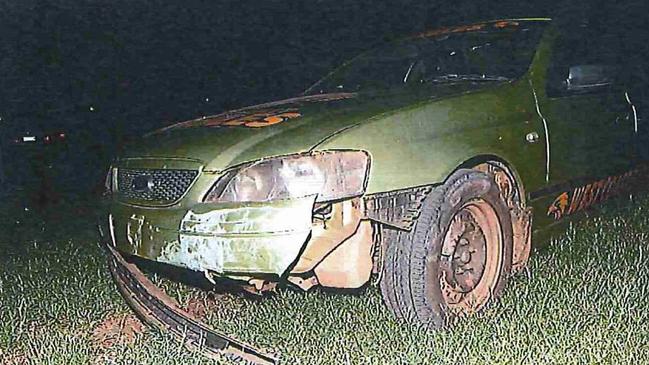
The murder of a prominent Centralian domestic violence advocate at the hands of her partner – who repeatedly ran her over with his car – led the family to mourn the loss of a “good mother” who was “working so hard to make that stop for other women”.
On April 1, 2022, 50-year-old Malcolm Abbott pleaded guilty to murdering R. Rubuntja, 46, out the front of Alice Springs Hospital on January 7, 2021.
Ms Rubuntja was a founding member of the Tangentyere Women’s Family Safety Group and had travelled months earlier to Parliament House in Canberra to talk with politicians about combating domestic violence in Central Australia.
Abbott was sentenced to 25 years in prison without parole, and also pleaded guilty to driving intoxicated and without a licence.
Previously, Abbott had been convicted of manslaughter in 1997 when he stabbed two women, killing one of them.

On the night of January 7, Abbott and Ms Rabuntja were out drinking, before they got in a dispute about pokie winnings.
She had won $550, and Abbott wanted some of the money for more alcohol but Ms Rubuntja refused.
The feud culminated at a service station at 9.37pm on Gap Rd, where Abbott hit Ms Rubuntja with his green Ford Falcon.
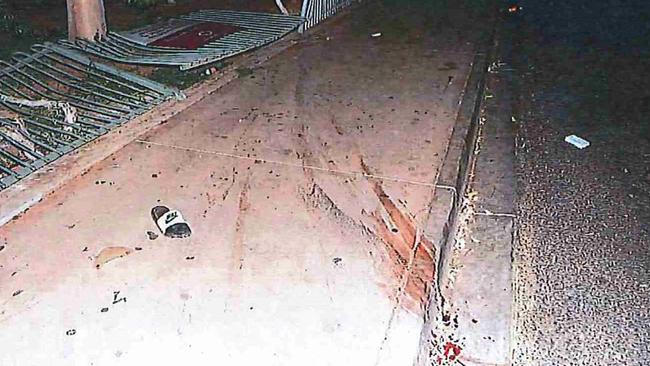
He reversed while his partner was trapped underneath, and then repeated the manoeuvre. Ms Rubuntja was trapped underneath the car and dragged along the bitumen. She was declared dead at 10.10pm.
A post mortem showed Ms Rubuntja suffered abrasions to 40 per cent of her body, a fractured spine, head injuries, broken ribs, and both her left and right arms and legs broken.
In a victim impact statement, members of Ms Rubuntja’s family said “it is really sad she died this way at the hands of her partner when she was working so hard to make that stop for other women”.
“She was a good mother,” the family said.
Years of suffering end in exoneration for the Chamberlain’s
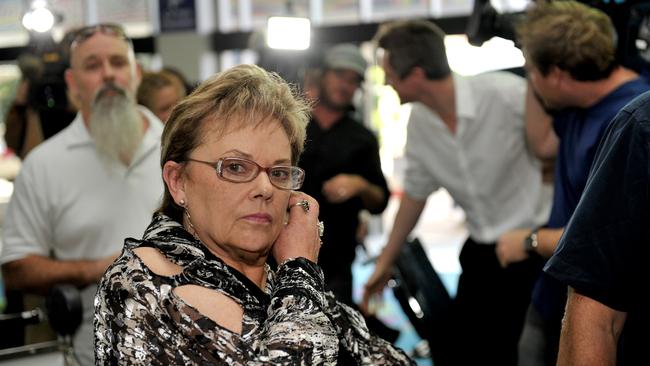
It was the case which captured headlines around the world, was the butt of jokes, and led to years of misery for the family at the centre of it, before they were finally exonerated.
When baby Azaria Chamberlain went missing from an Uluru campsite on August 17, 1980, the world was immediately gripped by a simple phrase: “A dingo took my baby”.
While there’s debate around what Lindy Chamberlain-Creighton (nee Chamberlain) truly said when she noticed her daughter missing, the phrase cemented itself in pop-culture.
But what may have seen a simple throwaway party one-liner was the harsh reality for the Chamberlains.
Both Ms Chamberlain-Creighton and her then-husband Michael were sentenced to prison, accused of murdering their daughter.
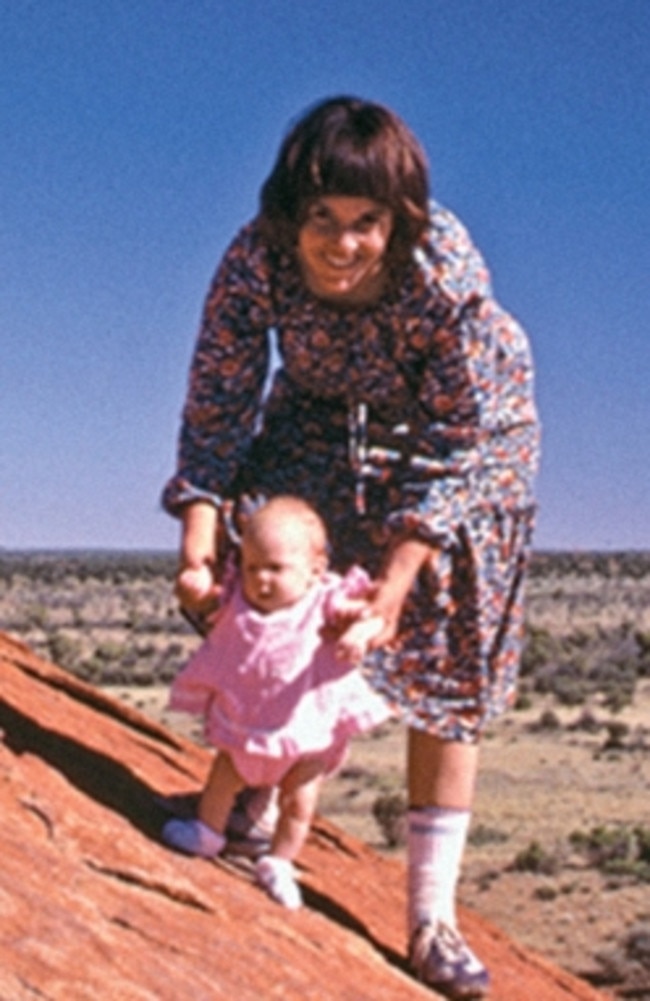
Ms Chamberlain-Creighton was sentenced to life imprisonment October 29, 1982, while her husband was given a suspended sentence after he was convicted as an accessory to the murder.
It wasn’t until a chance discovery of her daughter’s jacket in a dingo’s lair in 1986 which saw Ms Chamberlain go free.
However, it took a fourth coronial inquest before the Chamberlain’s were exonerated and given an updated death certificate.
On June 12, 2012, Coroner Elizabeth Morris delivered her findings which said Azaria Chamberlain was taken by a dingo.
Speaking to artist Anh Do afterwards, Ms Chamberlain-Creighton said “if I hadn’t gone through all that we wouldn’t have the laws that we’ve got in Australia right now, we’ve got independent forensic science now as a result of that trial”.
Tennant toddler rape draws then PM to town

It was a crime so shocking it forced the then-Prime Minister to visit Tennant Creek for the first time since 1982.
In 2020 a 27-year-old man was sentenced to 13 years in prison after he pleaded guilty to raping a two-year-old girl in Tennant Creek in 2018.
As a result of the attack, the toddler contracted gonorrhoea – a sexually transmitted disease – suffered physical injuries including bleeding, bruising, swelling, and a laceration, as well as psychological damage.
The toddler was raped while her mother was sleeping, the court heard.
After the attack, she was placed in an induced coma while being treated at Adelaide Children’s Hospital.
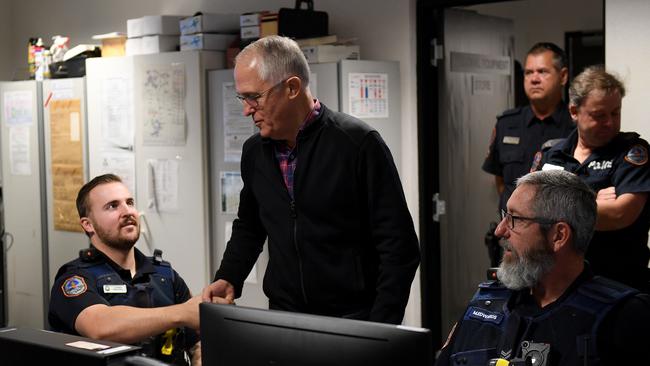
Crown prosecutor Glen Dooley said the crime “deeply disturbed the Tennant Creek community and the nation”.
It spurned then-Prime Minister Malcolm Turnbull to visit the town in 2018. He said he was left shocked after he read the full redacted report into what happened.
“It’s heartbreaking. You have to put the children first, full stop,” he said.
“That is a shocking story, a tragic story, and I read the full report on it.”
The man will be eligible for parole after serving nine-and-a-half years in prison.
Help is available for anyone struggling with domestic violence, such as but not limited to 1800 Respect (1800 737 732), Lifeline (13 11 14) or 13 YARN (13 92 76).




